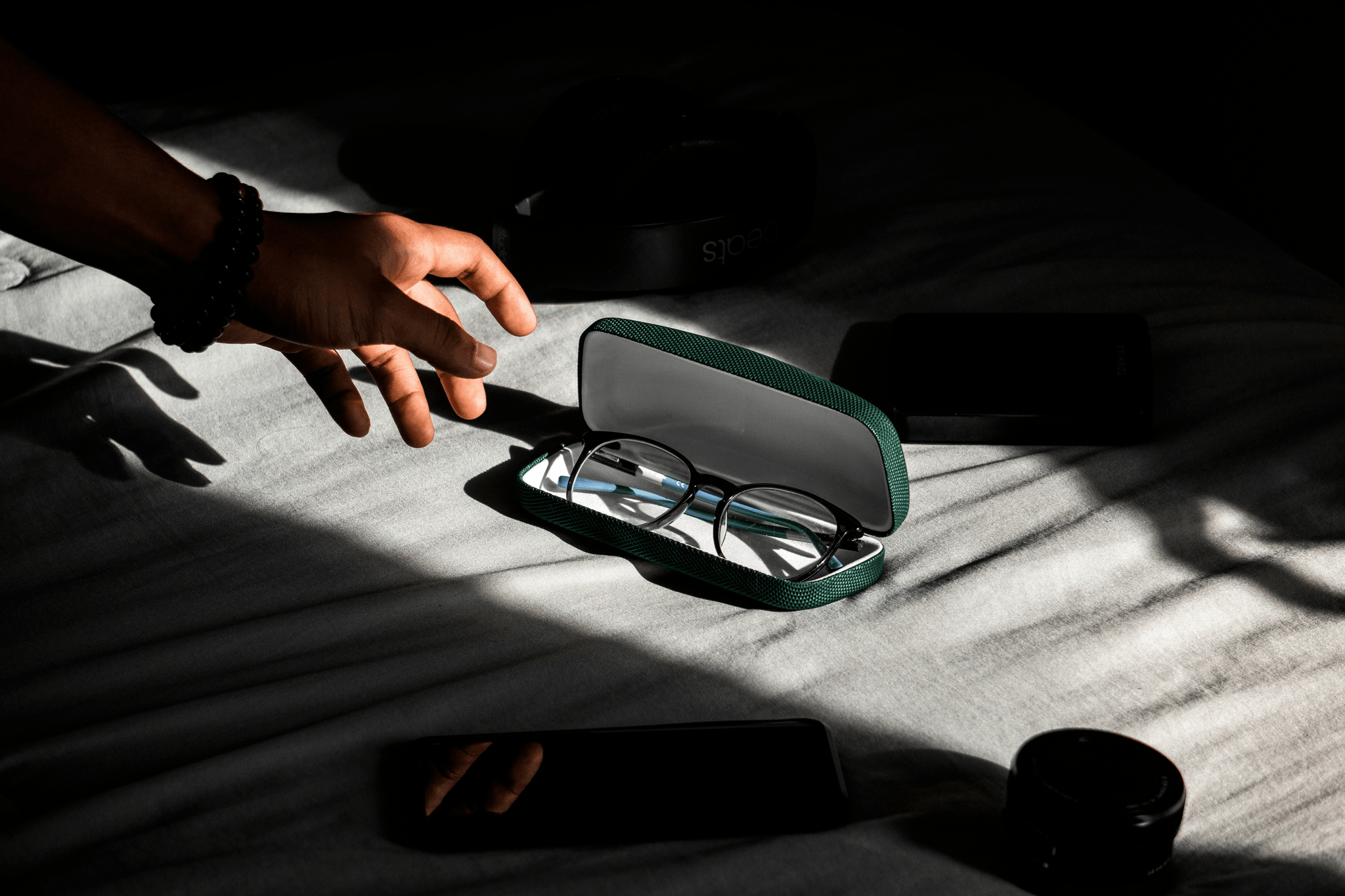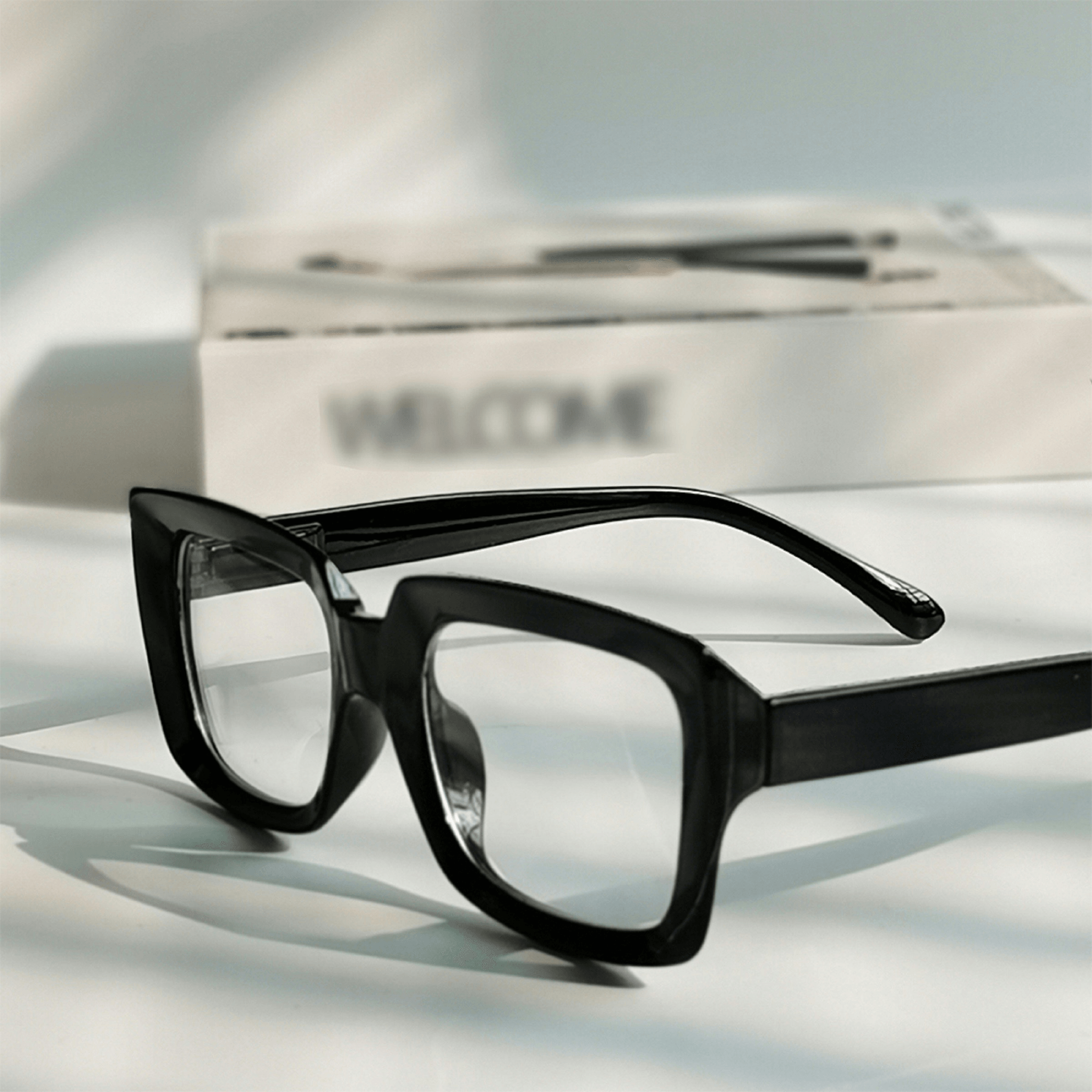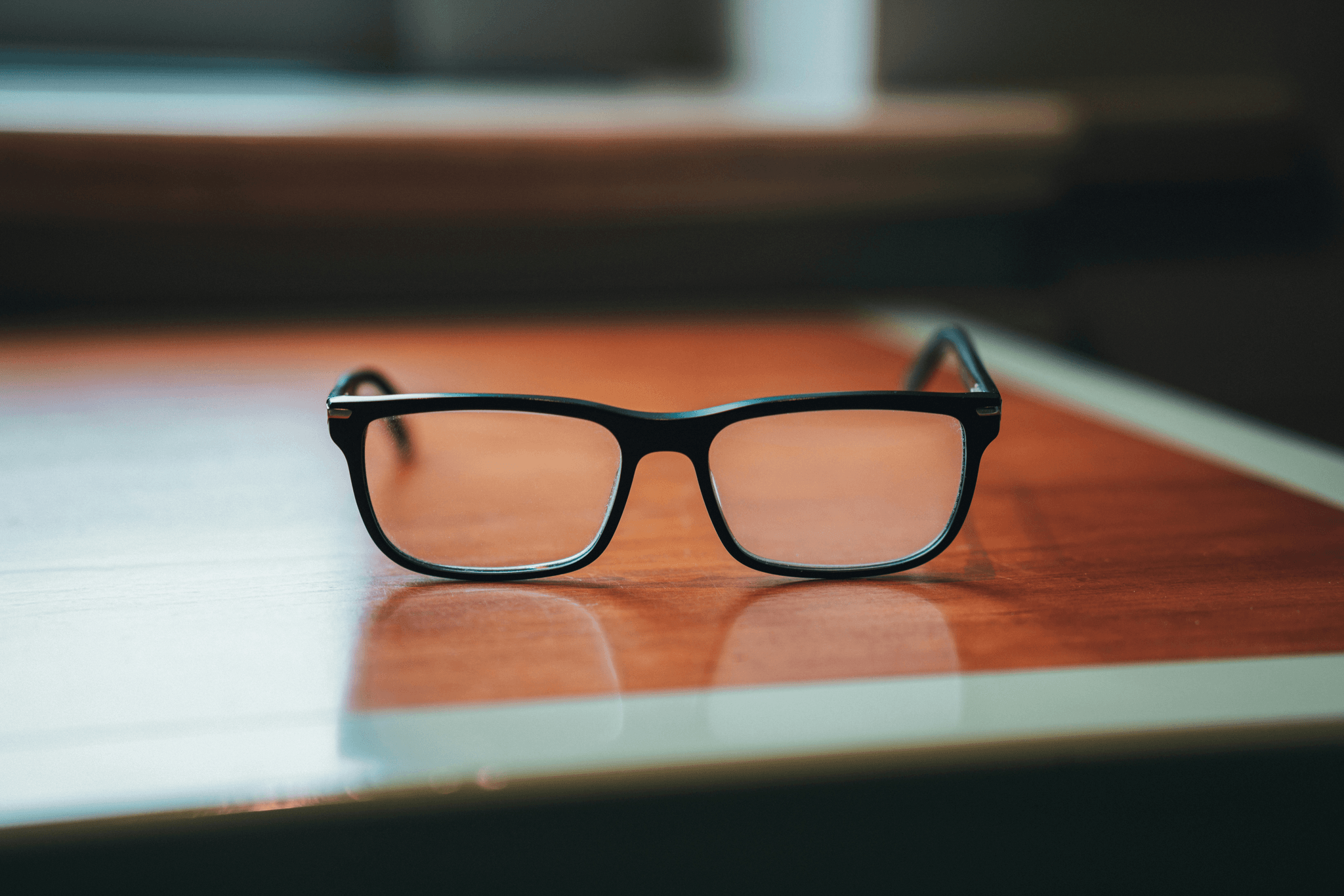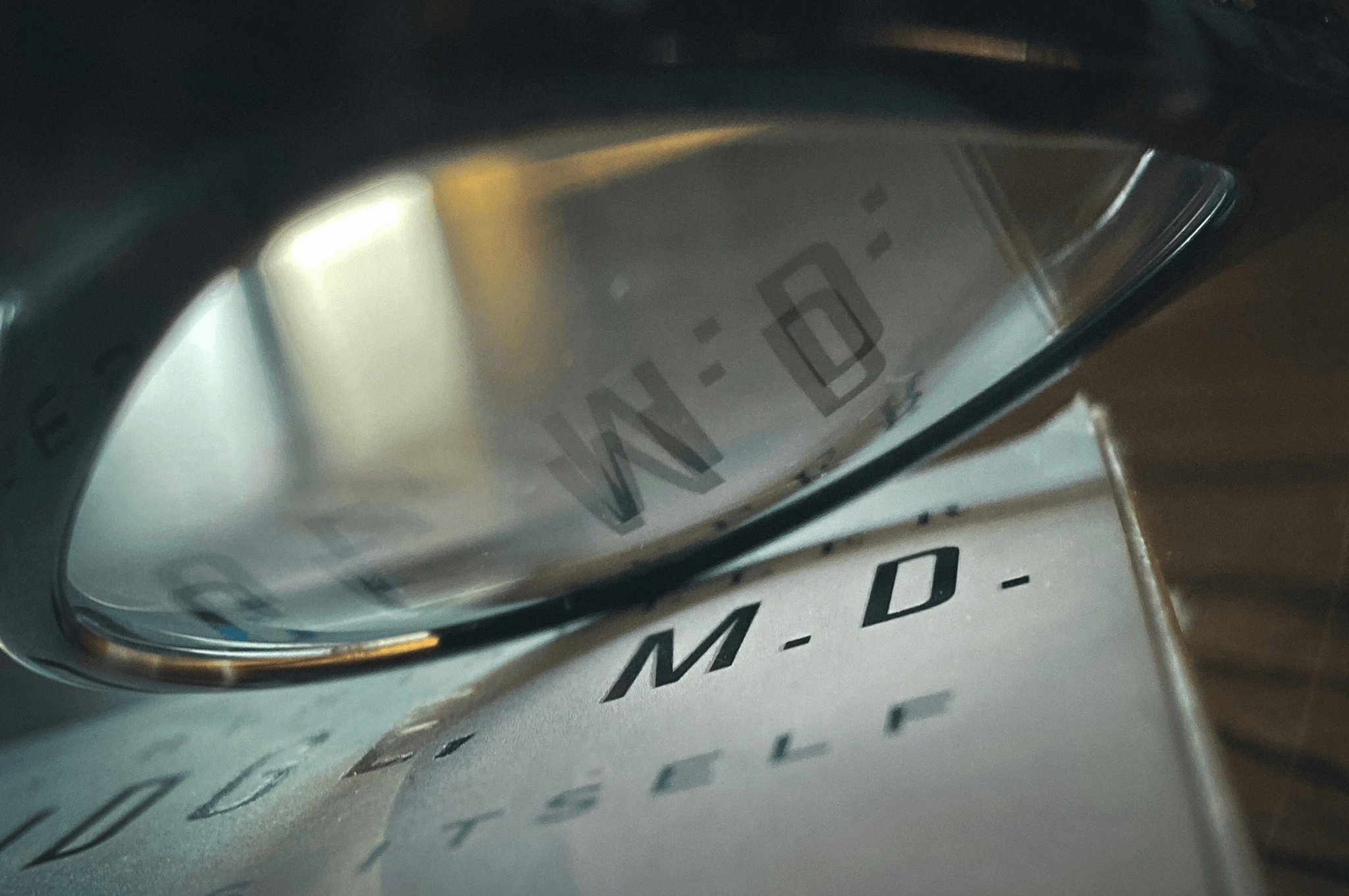Introduction

In the world of vision correction, understanding the differences between farsighted and nearsighted lenses is crucial for anyone seeking clarity in their sight. Whether you’re squinting at distant road signs or struggling to read a book up close, knowing what lenses are good for nearsightedness and farsightedness can make all the difference. This guide will take you through the science behind these common vision problems and help you choose the right lenses tailored to your needs.
Understanding Farsighted vs Nearsighted Lenses
Farsightedness, or hyperopia, occurs when distant objects are seen clearly while close ones appear blurry, while nearsightedness, or myopia, is just the opposite—nearby objects are clear but those far away are not. The lens types designed for each condition differ significantly; for instance, farsighted glasses lens types typically have a convex shape to help focus light correctly onto the retina.
The Science Behind Vision Problems
The science behind vision issues like farsightedness and nearsightedness revolves around how light enters our eyes and is focused on the retina. In simple terms, if your eyeball is too short or your cornea too flat, you may be diagnosed with farsightedness; conversely, an elongated eyeball leads to nearsightedness. Understanding these mechanics not only clarifies why we experience these conditions but also guides us in identifying whether we need glasses—“Am I nearsighted or farsighted glasses?” becomes an important question.
Choosing the Right Lenses for You
Selecting appropriate eyewear starts with understanding your specific vision needs; this includes knowing whether a prescription like +1.25 indicates farsightedness or if 0.75 means you're dealing with myopia instead. It’s essential to consult with an eye care professional who can interpret these numbers accurately as they relate to your unique situation—after all, not every pair of glasses fits every eye! With insights into near vs far sighted conditions as well as astigmatism—a common complication—you’ll be better equipped to make informed choices about your eyewear solutions.
What is Farsightedness?

Farsightedness, or hyperopia, is a common vision condition that can affect individuals of all ages. It occurs when light entering the eye focuses behind the retina instead of directly on it, leading to difficulty seeing nearby objects clearly. Symptoms often include blurred vision for close tasks, eye strain, and headaches after prolonged reading or screen time.
Definition and Symptoms of Farsightedness
In simple terms, farsightedness means that while distant objects may appear clear, nearby items can be a bit fuzzy. People with this condition might find themselves squinting or experiencing discomfort when trying to focus on things like books or smartphones. If you’re wondering if you're dealing with this issue, common symptoms include fatigue during close work and an overall sense of visual discomfort.
How Farsighted Lenses Work
Farsighted lenses are designed to correct the way light enters your eyes by bending it appropriately so that it focuses directly on the retina. These lenses are thicker in the center and thinner at the edges—essentially reversing how light behaves in someone who is farsighted. This adjustment allows for clearer vision at close range while maintaining clarity at a distance; hence why choosing the right lenses for nearsightedness and farsightedness is crucial.
Farsighted Glasses Lens Types Explained
Standard single-vision lenses are quite common and help correct distance vision issues while allowing for some near clarity as well. However, if you’re also dealing with astigmatism or require multifocal capabilities, bifocals or progressive lenses might be more suitable—each option having its own unique design tailored for specific visual challenges.
What is Nearsightedness?

Nearsightedness, also known as myopia, is a common vision condition where distant objects appear blurry while close objects can be seen clearly. This occurs because light entering the eye focuses in front of the retina rather than directly on it. Understanding this condition is crucial when discussing options like farsighted vs nearsighted lenses.
Definition and Symptoms of Nearsightedness
Nearsightedness typically develops in childhood or adolescence and can progress with age. Common symptoms include difficulty seeing faraway objects, squinting to see better, and experiencing eye strain or headaches after prolonged visual tasks. If you're wondering, Am I nearsighted or farsighted glasses? checking for these signs can help you identify your vision type.
How Nearsighted Lenses Function
Nearsighted lenses are specifically designed to correct the focal point of light entering the eye, allowing it to focus directly on the retina instead of in front of it. These lenses are concave (thinner at the center) and help diverge light rays so that they converge correctly on the retina for clearer distance vision. When considering What lenses are good for nearsightedness and farsightedness? it's essential to understand how each type functions differently.
Common Lenses for Nearsightedness
For those diagnosed with nearsightedness, various lens options exist to enhance their vision effectively. Single-vision lenses are most common for correcting myopia, but many also opt for progressive lenses if they need additional correction for reading or other close-up tasks later in life. It's worth noting that understanding terms like Farsighted glasses lens type can clarify why certain designs work better depending on whether you're dealing with nearsighted vs farsighted vs astigmatism conditions.
Key Differences in Lens Design

Comparing Farsighted and Nearsighted Lens Structure
Farsighted lenses, also known as convex lenses, are thicker at the center and taper towards the edges, helping to converge light rays before they reach the eye. In contrast, nearsighted lenses, or concave lenses, are thinner at the center and thicker at the edges; they diverge light rays to allow clear vision for nearby objects. This fundamental difference in lens structure plays a crucial role in how each type of lens corrects vision issues—whether you're asking yourself Am I nearsighted or farsighted glasses? or simply trying to understand your optical options.
The Role of Prescription Strength
Prescription strength significantly impacts how effective your glasses will be for correcting vision problems. For instance, a prescription like +1.25 indicates farsightedness; thus, it’s essential to recognize that higher positive numbers correlate with stronger corrective power for those needing help focusing on close objects. Conversely, negative numbers signify nearsightedness—so if you're wondering if 0.75 is nearsighted or farsighted, remember that this lower figure typically leans toward mild nearsightedness.
Farsighted Glasses Meaning: What It Implies
The term farsighted glasses refers specifically to eyewear designed for individuals experiencing difficulty seeing nearby objects clearly due to their eye shape or focusing ability. When you wear these glasses, they help your eyes focus light correctly onto the retina by altering how light enters your eyes—essentially bridging the gap between distance and clarity when viewing near objects. Understanding this meaning can clarify whether you’re dealing with conditions like near vs farsighted vs astigmatism; knowing precisely what type of correction you need is vital for optimal visual health.
Identifying Your Vision Type

Understanding whether you are nearsighted or farsighted is crucial for choosing the right eyewear. This section will guide you through the signs and symptoms that differentiate these two common vision issues, helping you answer the burning question: Am I nearsighted or farsighted glasses? Knowing your vision type can lead to better clarity and comfort in your daily life.
Am I Nearsighted or Farsighted Glasses?
To determine if you need nearsighted or farsighted glasses, consider how well you see at various distances. If objects up close appear clear but distant objects are blurry, you may be nearsighted. Conversely, if you struggle to see nearby items but can view faraway objects clearly, then you're likely experiencing farsightedness. Knowing the differences between these conditions is essential for understanding which lenses suit your needs best.
Understanding Prescription Numbers: Is +1.25 or 0.75 Farsighted or Nearsighted?
Prescription numbers can be a bit perplexing at first glance, especially when trying to figure out if +1.25 is nearsighted or farsighted and whether 0.75 falls into the same category. Generally speaking, positive numbers indicate a prescription for farsightedness while negative numbers denote nearsightedness—so +1.25 suggests a need for farsighted lenses! Similarly, a prescription of +0.75 also indicates that you're on the side of needing help with distance vision rather than close-up tasks.
Nearsighted vs Farsighted vs Astigmatism
It's essential to understand how nearsightedness and farsightedness differ from astigmatism—a condition where blurred vision occurs at all distances due to an irregularly shaped cornea or lens curvature. While nearsighteds typically require lenses that help them see far away more clearly (think concave lenses), those who are farsighted benefit from convex lenses that aid in focusing on nearby objects efficiently (farsighted glasses lens type). Recognizing these distinctions allows individuals to make informed choices about what lenses are good for nearsightedness and farsighteness.
Daposi Eyewear Solutions

Whether you’re grappling with farsightedness or nearsightedness, understanding what lenses are good for nearsightedness and farsightedness is crucial. With their expertise, Daposi ensures that you don’t have to choose between style and functionality—your eyewear can be both.
Customizing Lenses for Individual Needs
At Daposi, customizing lenses for individual needs is a top priority. They recognize that not everyone falls neatly into the categories of farsighted vs nearsighted lenses, so they offer personalized assessments to determine your specific vision requirements. This means if you're asking yourself, Am I nearsighted or farsighted glasses?—Daposi has the answer tailored just for you.
Whether you need a lens type that corrects +1.25 or 0.75 prescriptions, their knowledgeable staff can guide you through the process with ease. Understanding how different lens types work can be overwhelming; however, Daposi simplifies this by providing clear explanations about each option available for both farsighted and nearsighted individuals. Their commitment to customization means you'll leave with eyewear that feels as good as it looks.
Eco-Friendly Lens Options
In today's world, being environmentally conscious is more important than ever—and Daposi gets it! They offer eco-friendly lens options that not only benefit your vision but also contribute positively to our planet’s health. Choosing between farsighted glasses lens types doesn’t have to come at the expense of Mother Earth; with Daposi’s sustainable practices, you can feel good about your purchase.
These eco-friendly options are crafted using materials that minimize environmental impact while still providing high-quality optical performance for both nearsighted and farsighted users alike. So whether you're inquiring about the differences in prescription strengths or simply want stylish frames that make a statement, rest assured there’s an eco-conscious solution waiting for you at Daposi.
Collaborating with Daposi for Quality Eyewear
Collaboration is key when it comes to achieving quality eyewear solutions at Daposi! By working closely with their team of professionals, customers can better understand how near vs far sighted lenses differ in design and function—helping demystify terms like farsighted glasses meaning. Their experts will assist in determining which lenses suit your needs best based on factors like lifestyle and prescription strength.
Conclusion

In the world of vision care, making informed choices about your eyewear can significantly impact your daily life. Understanding the differences between farsighted vs nearsighted lenses is crucial in selecting the right pair for your needs. With a bit of knowledge about how these lenses work and what they mean for your vision, you can confidently choose glasses that enhance your sight.
Making Informed Choices About Vision
When considering what lenses are good for nearsightedness and farsightedness, it’s essential to know your specific vision type. Are you left squinting at road signs or struggling to read a book? By identifying whether you are nearsighted or farsighted, you can narrow down your options and select the ideal prescription that suits your lifestyle.
To answer the burning question, Am I nearsighted or farsighted glasses? it’s vital to consult with an eye care professional who can provide clarity on your prescription numbers. For instance, if you're wondering if +1.25 is nearsighted or farsighted, it's important to note that this indicates a degree of farsightedness. Similarly, knowing whether 0.75 is nearsighted or farsighted will help guide you in choosing the right pair of lenses tailored to your unique visual needs.
Importance of Regular Eye Exams
Regular eye exams play a pivotal role in maintaining optimal vision health and ensuring that any changes in eyesight are promptly addressed. These check-ups not only help determine if you need new prescriptions but also assist in distinguishing between conditions like nearsighted vs farsighted vs astigmatism. The earlier any issues are detected, the better equipped you'll be to manage them effectively.
Moreover, keeping up with routine eye exams allows for adjustments in lens strength as needed over time—ensuring that whether you're wearing a pair of farsighted glasses lens types or something designed for near vision correction, you're always seeing clearly. Remember: proactive eye care leads to happier eyes!
Finding the Right Eyewear Partner
Choosing an eyewear partner like Daposi can make all the difference when it comes to customizing solutions tailored specifically for individual needs—whether that's addressing astigmatism along with either type of lens correction or opting for eco-friendly options without compromising style! Collaborating with professionals ensures you receive quality eyewear that meets both aesthetic desires and functional requirements.
Additionally, understanding terms like farsighted glasses meaning becomes clearer when working alongside knowledgeable staff who can guide you through various lens options available today—making shopping less daunting! Ultimately, finding an eyewear partner who prioritizes quality and customer satisfaction will lead you toward achieving optimal visual comfort.
